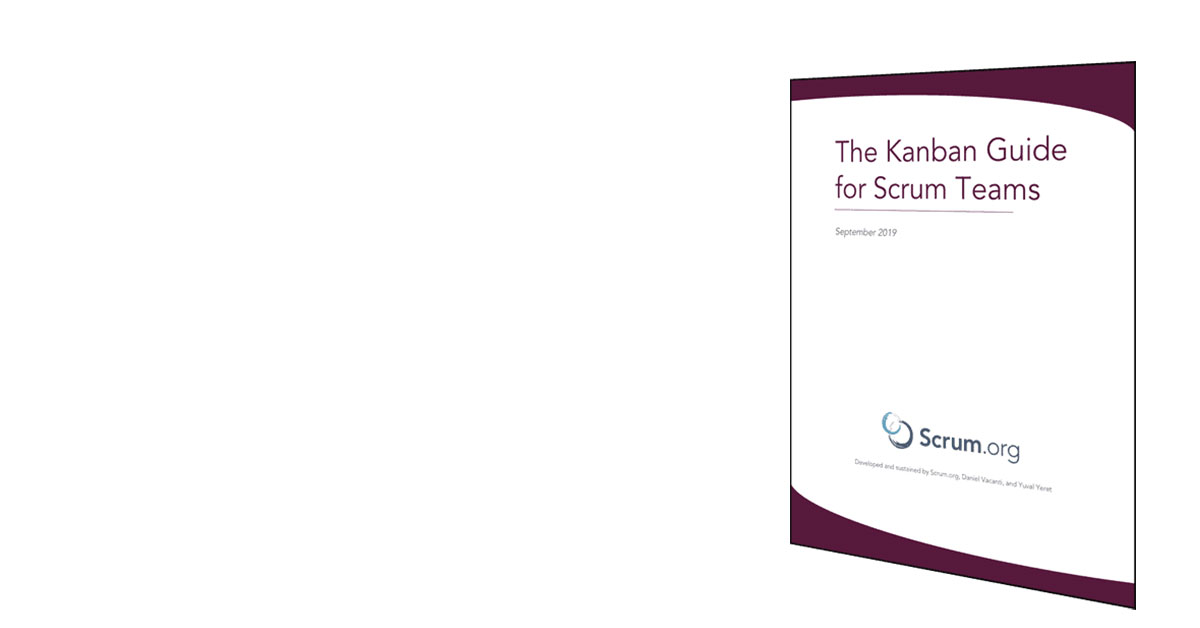
How to Keep Content Marketing Agile
When I talk to marketing teams, Content is one of the areas with the most desire for achieving agility without losing your sanity. Here is

When I talk to marketing teams, Content is one of the areas with the most desire for achieving agility without losing your sanity. Here is

It’s been so exciting to hear so much positive feedback and interest in the new Scrum.org Kanban for Scrum Teams guide and the accompanying Professional Scrum with Kanban class. Creating the class and guide together with Daniel (Vacanti) & Steve (Porter) and then working on getting it to market in a professional way (how else? ) with the Scrum.org staff has been a great experience and a major focus area for me in the last couple of months.
As you might imagine, together with the interest come some questions about some choices we made in the design of the guide and the class. Several are emerging as the frequently asked ones. I wanted to tackle a couple of those in this post.
Where are some of the core Kanban practices?

The Email Inbox – The real Personal Kanban frontier
I’ve been struggling for years with visualizing my personal work using Kanban.
Using a physical board isn’t that practical since a lot of the time I actually do my work I’m not at my office.
I then tried Kanban tools such as LeanKit, Trello (and even AgileZen…). This worked pretty well for a while, but I kept falling out of it. Something was missing.

* Boards | Trello Map your work, control your life: Personal Kanban Productivity 101: An Introduction to The Pomodoro Technique PopcornFlow: If change is hard,

We are relentlessly expanding our tools set
We at AgileSparks help companies create effective, efficient and

The Kanban method is built around improving the flow of product development. It works very well when you work according to priority. It also works well when some items have schedule constraints. When many items have schedule constraints this becomes an issue.
The Motive
I was having a discussion with one of my clients and they raised the issue that what was going on wasn’t clear. Immediately I thought of setting up a Kanban board. However, when we started to do that it became clear that the main issue is how to commit to clients about deliveries.

In this article we will try to define the approach known as “Agile Marketing” – The application of ideas from the world of “Lean/Agile Software Development” to the world of marketing with the aim of achieving marketing agility.
What ISN’T Agile Marketing
First, a couple of clarifications and myth-busting. Agile Marketing isn’t reactive marketing. Agile Marketing isn’t about how you react in a Marketing/PR crisis (ask United about those) or real-time opportunity (you can ask Oreo about those). I don’t mean that you can not/shouldn’t deal with those when you’re doing Agile Marketing, but it isn’t what Agile Marketing is about.

This ISN’T Agile Marketing
First, a couple of clarifications and myth-busting. Agile Marketing isn’t reactive marketing. Agile Marketing isn’t about how you react in a Marketing/PR crisis (ask United about those) or real-time opportunity (you can ask Oreo about those). I don’t mean that you can not/shouldn’t deal with those when you’re doing Agile Marketing, but it isn’t what Agile Marketing is about.
Agile Marketing also isn’t “We just get things done without any real process.” Being super-responsive and saying “yes we can” all the time isn’t Agile Marketing. (Especially if it means unsustainable pace).
Finally, Agile Marketing also isn’t Scrum, Daily Scrums/Standups, Sprints, Scrum Masters, Kanban Boards. It

Over the years we at AgileSparks have been leading the charge when it comes to creating mashups and hybrids of approaches such as Scrum, Kanban, SAFe, LeSS, and whatever. Mashups and hybrids can be very attractive as they can be an excuse for taking what you like from each approach and leaving behind the hard stuff. In mashing up approaches you need to make sure whatever set of practices you end up with is cohesive and effective. Coming up with the smallest set of practices that is still cohesive and comprehensive and brings in the best of the Scrum iterative world and the Kanban flow-oriented world is a result of years of work in the trenches.
I recently started working with Steve Porter, Dave West, and others at Scrum.org as well as Daniel Vacanti of Actionable Agile (And a long-time friend and AgileSparks partner) on bridging the Scrum and Kanban worlds. We believe the time is right to put behind the arguments around which approach is better and help both Kanban and Scrum practitioners realize that actually they are stronger together.

Tools for Agile Marketing seem to be a hot topic in the various Agile Marketing communities. The Marketing Agility Podcast is talking to some tool vendors and people started to discuss it on the Agile Marketing Facebook Group as well.
For co-located marketing teams the best approach would probably be to start without an electronic tool and just use a physical board/wall with sticky notes at least until they get the hang of it and learn what they really need. Many marketing teams are distributed and therefore don’t have this luxury. While moving to a co-located setup is definitely a recommended option it isn’t always realistic… So those teams do need to have some electronic tool to support their move to agile marketing.
Request for additional information and prices